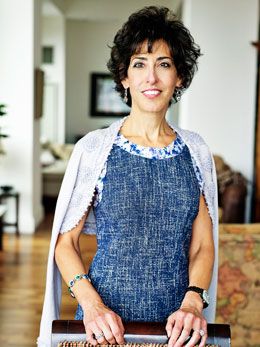STEM: Helping Women Advance from Lab Bench to Boardroom
Females students pursuing a Science, Technology, Engineering, and Mathematics (STEM) pathway need earlier enticement and more C-suite role models, writes Mylan’s EVP & Chief Strategy Officer, Adele Gulfo.
Adele Gulfo

At the Fifth Annual STEAM Fair and Reception hosted by the Women’s Congressional Policy Institute (WCPI) last month, the Rayburn House Office Building in Washington, DC-one that’s typically bustling with congressional activity for the U.S. House of Representatives-was filled with a different kind of energy: that of talented middle and high school girls eager to learn more about pursuing education and careers in Science, Technology, Engineering, the Arts and Mathematics.
While the event added “the Arts” to the equation, the predominant acronym is STEM, and events like these are critical as we try to advance women’s participation in STEM-related fields. According to CEB, women make up about 46% of the labor force in the U.S., yet only constitute 26% of the STEM workforce. That percentage drops even further the higher you go up the corporate ladder in Healthcare and Tech companies. This disparity is not surprising as only roughly 18% of women take STEM courses at the university level with the remaining 82% opting for non-STEM courses.
To address this problem, intervention is required at the grade and high school levels. Hands-on experience that excites and entices must spark initial interest and make a STEM education a desired pathway for female students. Our work, however, is not finished; having obtained their undergraduate and graduate degrees in STEM, we need young women to see female role models who have leveraged their STEM training to secure vital, powerful and influential C-suite roles. If you can’t envision it, you can’t pursue it. I know from firsthand experience sharing my personal story with female science majors the dramatic eye-opening impact that is provided.
It is not only in the interest of female STEM students, but also for society at large that women seek and obtain influential roles directing research and development efforts, as well as leading STEM-based companies. For example, until women researchers became involved, mastectomies, not lumpectomies, were the mainstay of breast cancer treatment. Without women researchers, we would not know HIV to be the virus that causes AIDS. Before women scientists engaged in cardiovascular research, it was not considered a major health threat to women. We now know that cardiovascular disease is the number one killer of women, but drugs were developed for men – animal models used to select and advance drug candidates were not tested in female mice. Yet, pathophysiologically, there are significant differences between men and women that only recently are being explored, again, because of the involvement of women scientists.
The U.S. Bureau of Labor Statistics closely tracks trends in STEM-related fields and has found that STEM occupations, on average, earn higher salaries and higher employment rates than non-STEM jobs. But what is even more exciting for young women is that STEM education and job experience can be leveraged to secure corporate leadership positions and boardroom spots, where we also see a significant shortage of women.
I cannot stress enough the importance of engagement in science at an early age. When my father, who was a mechanical engineer, observed my interest and aptitude in math and science he quickly became my biggest champion. His support of my achievements and positive reinforcement throughout elementary, middle and high school provided the initial catalyst for me to pursue STEM education. This combined with growing up in New Jersey, the “nation’s medicine chest,” made a career in STEM not only attainable, but also, desirable. Again, if you can’t see it, you can’t pursue it.
Early on, I worked in academic institutions and research labs wearing goggles and white lab coats while staring down a microscope. But I learned there was more, in fact, much more. Once I saw what I wanted, it took me a while to implement my plan to move to the business of science. My foundation in science gave me the discipline, problem-solving skills and intellectual curiosity to pursue a career in the pharmaceutical industry. When I look back at my journey from “bench to boardroom,” I now see the inflection points where intervention can be critical for other women. These include advocating for yourself, taking risks, working outside your comfort zone, making personal sacrifices, and most important, seeking the stretch assignments and special projects that get you noticed by a broad range of people in the company.
In every job that I’ve had in my 30-plus years, I’ve been forthright about my career interests. However, I have noticed that women oftentimes aren’t proactively asking for more – whether it be in the STEM-related fields or positions within corporations – because women typically don’t have the proper role models inside their companies to see what “more” looks like.
I’m proud to say that’s not the case at Mylan, where I was attracted to our CEO, Heather Bresch, as a kindred spirit in making high quality medicine accessible to the world. At the most bedrock level, this is the ultimate importance of STEM education and careers: to better the world around us. At Mylan we have a bold mission: to provide the world's 7 billion people access to high quality medicine. We know this is possible if we continue to encourage half the talent pool not to sit on the sidelines, but to be captains on the field.
Adele Gulfo is Head of Global Commercial Development at Mylan.